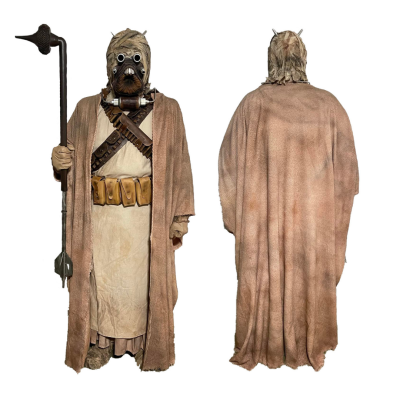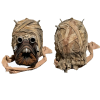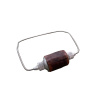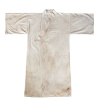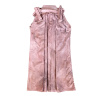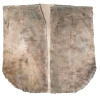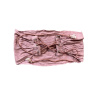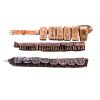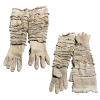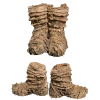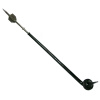Cliff Attack - AKoba - Tusken
Description: Cliff Attack (A’Koba) Tusken
Prefix: DZ
Detachment: Krayt Clan
Context: Episode IV: A New Hope
Fearsome desert savages inhabiting the rocky Jundland Wastes, Tusken Raiders are the foremost reason Tatooine colonists do not wander far from their isolated communities. Extremely territorial and xenophobic, Tusken Raiders will attack with very little provocation. They show no allegiance to even their native world-mates, as these nomads have attacked Jawa scouting parties on occasion. Covered from head-to-foot in tattered rags and robes, Tusken Raiders — or Sand People as they are also known — brandish a deadly bladed club known as a gaderffii. They also carry projectile rifles with which to shoot at passing vehicles. The male of the species tend to be the aggressors.
This Visual Guide has been reviewed by the detachment staff and the LMO team and is certified for use as a minimum approval guideline for GMLs. GMLs are free to approve this costume type.
This is a visual guide used for 501st costume approval, not a how-to for construction. Construction details are found at the costume's Detachment website. Measurements provided here are generalized, and not criteria for approval. All 501st costumes are proportionate to the wearer in terms of size, fit, and scale. During evaluation, both text and images (CRL and Reference) must be considered. When in doubt about a feature of a submitted costume, GMLs should post questions in the Legion forum's DL/GML peer review section.
Required Costume Components
The following costume components are present and appear as described below. For 501st membership only the requirements in black need to be met.
Helmet / Mask
- A fully wrapped head of similar design matching Episode 4, Peter Diamond Tusken.
- Unmodified commercially available latex masks are inaccurate.
- Masks built on a latex base are acceptable.
- Cloth wrapping is used for the main part of the head.
- All wraps are of the same color and made from duck cloth or bull denim.
- Head wraps can be unkempt and hang over the back of the neck stopping at shoulder height, as to match the Peter Diamond helmet specifically.
- Leather or simulated leather is used for the “snout” wrapping.
- Snout wrapping must be accurate to the references.
- Tucked mouth area is not uniformly “pleated” and must be accurate to the references.
- Mask has nine metal or simulated metal detailed pieces:
- Silver in color.
- Two (2) eye stalks.
- Eye stalks taper toward the front with two slots cut into the underside of each piece.
- Eye stalks must be rotated so the slots are approximately 45-degrees to the outside.
- Four (4) head spikes.
- Head spikes have a slight taper.
- Two (2) “blood splitter” cheek tusks.
- Cheek tusks have a slight taper, a narrower end section, with a hole in the end.
- Cheek tusks must have a raised lip around the end.
- One (1) nose piece.
- Nose piece has a flat bottom, curved top, with two vertical slots in the end.
- Screening or tinted lenses are used to conceal eyes and mouth from outside of the mask.
- The finished mask is weathered and dirty.
- A length of fabric similar to the fabric of the wraps of the helmet, arms and boots is attached to the inside back of the helmet and used as a neck seal.
- The neck seal can be a thin length of fabric, but is not thick and bulky as is seen on prequel tuskens.
Neck Breather
- Device worn around the neck of a design similar to that seen in Episode 4.
- Neck Breather resembles a small cylinder 3 to 4 inches (7.62cm – 10.16cm) in length, approximately 2 inches (5.08 cm) in diameter, with tapered caps on either end connecting to a tube, which runs behind the neck.
- Breather has knurled end caps and flare nuts on each end.
- One reference shows a small ridge underneath the center equator of the cylinder. This ridge detail is acceptable but not required.
- Cylinder is wrapped in leather or leather like material.
- The overlapping end seam of the leather wrap should be visible.
- Neck tube should be approximately 1/4 inch (6mm) in diameter and match the shape of on screen references.
Inner Robe
- Inner Robe is made of a bull denim / duck cloth, which is inside out.
- The length of the robe does not expose the top of the boot.
- Robe is open in the front, overlapping and secured by the sash/waist bandoliers.
- This loose-fitting inner robe is worn underneath the bandoliers.
- Robes and mask conceal all skin around the neck.
- Loose sleeves cover to approximately 4 inches (10.16cms) above the wrist.
- The finished robe is weathered.
- Weathering is to be realistic.
- There is a stitched hem at the bottom approximately 1.25 inches (3.175cms). This is a finished hem without frays.
- Dust and dirt where it would match onscreen photos, but does not resemble grease marks or staining caused from wetness. Weathering should not be black in color.
Under Skirt
- Under skirt should extend 4 to 5 inches (10.16 – 12.7cms) beyond / below the hem of the inner robe and reach to the top of the boot with a finished edge (not frayed).
- If using a short piece of material as a faux skirt (for heat or other accommodations), it should have slightly more fullness then the inner robe for the correct draping.
- The finished under garment is weathered.
- Weathering is to be realistic.
- Dust and dirt where it would happen naturally, but does not resemble grease marks or staining caused from wetness. Weathering should not be black in color.
Outer Robe
- Outer Robe is very loose fitting and made of tufted patterned cloth that is weathered and sand colored.
- Robe is constructed similar to a poncho.
- A rectangular piece of fabric seamed at the shoulders. Neckline has draped collar with a rolled hem ending halfway down the center front opening.
- Outer Robe reaches to at least the bottom of the skirt at center, not at outer edges. Outer edges are higher towards hands. Making a U shape.
- Outer Robe is as wide as the wearer’s arms, stopping at the wrist.
- Outer robe is sewn up the sides with an opening for the hands at 24 inches (60.96cms) down from wrist.
- At 8 inches (20cms) and 12 inches (30.48cms) down from wrist, in opening, two medium-sized snap closures are used to keep the robe sleeve closed.
- There should be seams on the shoulders and up the sleeves for this character.
- The finished robe is weathered.
- Weathering is to match on screen look.
- Some fraying at the hem, but does not have overly long loose threads.
- Dust and dirt where is would happen naturally, but does not resemble grease marks or staining caused from wetness. Weathering should not be black in color.
Waist Sash
- Waist Sash is made of a similar color fabric to the outer robe.
- Waist Sash is 5 to 7 inches (12.7 – 17.78cms) in width.
- The sash may be laced closed / together.
- No fraying and no excess hangs from the knotting or attachment.
- The sash is worn over the inner robe, and under the waist bandolier. The sash is rarely seen.
- Waist sash is weathered.
Bandoliers
- Three bandoliers are worn over the inner robe with two across the chest and one around the waist.
- Bandoliers are a Martini Henry, Turkish Ottoman and a custom made waist bandolier of the Peter Diamond Tusken.
- Extension straps may be needed for the bandoliers in order for them to hang low enough.
- Chest bandoliers are not to be tight up under the armpit area.
- Bandoliers are weathered.
Gloves / Arm Wraps
- Arm Wraps
- Weathered, sand-colored cloth wrappings start at the wrist, above the palm.
- No wraps are around the hand / palm.
- Wraps conceal the cuffs of the gloves and all skin on the arms.
- The wraps continue up the arm until concealed within robes.
- Gloves
- Weathered, sand-colored cloth or leather gloves.
Boots
- Boots or shoes, covered with cloth wrappings.
- Wraps are the same color and fabric as the mask and arms.
- Wraps are weathered.
- Wrappings continue up the boot until concealed within the robes.
- Wraps conceal all skin on the legs.
Optional Accessories
Items below are optional costume accessories. These items are not required for approval, but if present appear as described below. If adding in an accessory after initial approval, the item still needs to be submitted to local GML for approval before use.
Gaderffii (gaffi stick)
- The Gaffi Stick is of similar design to the (pineapple) style used in Episode 4.
